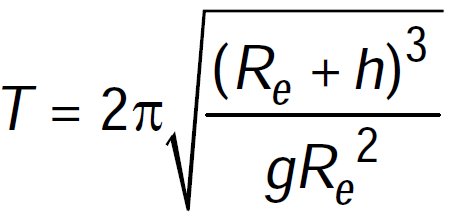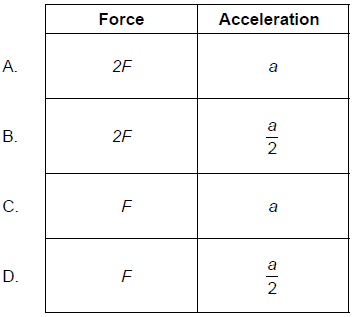IB PHYSICS SL (Standard level)- 2024 – Practice Questions- All Topics
Topic 6.2 – Newton’s law of gravitation
Topic 6 Weightage : 4 %
All Questions for Topic 6.2 – Newton’s law of gravitation , Gravitational field strength
Question
Which is the definition of gravitational field strength at a point?
A The sum of the gravitational fields created by all masses around the point
B The gravitational force per unit mass experienced by a small point mass at that point
C G , where M is the mass of a planet and r is the distance from the planet to the point
D The resultant force of gravitational attraction on a mass at that point
▶️Answer/Explanation
Ans: B
Question
Newton’s law of gravitation
A. is equivalent to Newton’s second law of motion.
B. explains the origin of gravitation.
C. is used to make predictions.
D. is not valid in a vacuum.
▶️Answer/Explanation
Markscheme
C
Isaac Newton’s Law of Universal Gravitation is used to predict the position of planets based on their mutual force of gravity.
Question
The gravitational field strength at the surface of Earth is g. Another planet has double the radius of Earth and the same density as Earth. What is the gravitational field strength at the surface of this planet?
A. \(\frac{g}{2}\)
B. \(\frac{g}{4}\)
C. 2g
D. 4g
▶️Answer/Explanation
Markscheme
C
Gravitational field strength at earth , \(g_e\)
\(= \frac{GM_e}{R^2} = \frac{G\times \frac{4}{3}\times \pi\times R_e^3\times \rho_e }{R_e^2}\)
\(= \frac{4}{3}\times G \times \pi\times \rho_e\times R_e\)
Gravitational field strength at other planet , \( g_p\)
\(=\frac{4}{3}\times G \times \pi\times \rho_p\times R_p\)
Now Given that
\(R_p= 2\times R_e \; and \; \rho_e= \rho_p\)
\(\therefore \frac{g_p}{g_e} =\)
\(\frac{\frac{4}{3}\times G \times \pi\times \rho_p\times R_p}{\frac{4}{3}\times G \times \pi\times \rho_e\times R_e}\)
\(=\frac{2\times R_e}{R_e}=2\)
\(\therefore g_p = 2\times g_e\)
Question
On Mars, the gravitational field strength is about \(\frac{1}{4}\) of that on Earth. The mass of Earth is approximately ten times that of Mars.
What is \(\frac{{{\text{radius of Earth}}}}{{{\text{radius of Mars}}}}\) ?
A. 0.4
B. 0.6
C. 1.6
D. 2.5
▶️Answer/Explanation
Markscheme
C
Gravitational field strength at Earth , \(g_e\)
\(= \frac{GM_e}{R_e^2}\)
Gravitational field strength at Mars \(g_m = \frac{GM_m}{R_m^2}\)
\(\therefore \frac{g_m}{g_e}=\frac{\frac{GM_m}{R_m^2}}{\frac{GM_e}{R_e^2}}\)
\(=\frac{M_m \times R_e^2}{M_e \times R_m^2}\)
Now given that \(\frac {g_m}{g_e} =\frac{1}{4}\) and \( M_e = 10\ times M_m\)
\(\therefore \frac{M_m\times R_e^2}{10 \times M_m \times R_m^2} =\frac{1}{4}\)
or
\(\frac{R_e^2}{R_m^2} =\frac{10}{4}\)
or
\(\frac{R_e}{R_m}=\sqrt{2.5} =1.58 \approx 1.6\)
Question
Which single condition enables Newton’s universal law of gravitation to be used to predict the force between the Earth and the Sun?
A. The Earth and the Sun both have a very large radius.
B. The distance between the Earth and the Sun is approximately constant.
C. The Earth and the Sun both have a very large mass.
D. The Earth and the Sun behave as point masses.
▶️Answer/Explanation
Markscheme
D
Although Newton’s law of gravitation applies strictly to particles, we can also apply it to real objects as long as the sizes of the objects are small relative to the distance between them.The Sun and Earth are far enough apart so that, to a good approximation, we can treat them both as particles
Question
A planet has half the mass and half the radius of the Earth. What is the gravitational field strength at the surface of the planet? The gravitational field strength at the surface of the Earth is 10 N kg–1.
A. 2.5 N kg–1
B. 5.0 N kg–1
C. 10 N kg–1
D. 20 N kg–1
▶️Answer/Explanation
Markscheme
D
Gravitational field strength at Earth , \(g_e\)
\(= \frac{GM_e}{R_e^2}\)
Gravitational field strength at other planet \(g_p = \frac{GM_p}{R_p^2}\)
\(\therefore \frac{g_p}{g_e}=\frac{\frac{GM_p}{R_m^2}}{\frac{GM_e}{R_e^2}}\)
\(=\frac{M_p \times R_e^2}{M_e \times R_p^2}\)
Given that
\(M_p=\frac{1}{2}M_e \; and \; R_p=\frac{1}{2} R_e\)
Hence
\(\frac{g_p}{g_e}=\frac{M_p \times R_e^2}{M_e \times R_p^2}\)
\(=\frac{\frac{1}{2}M_e \times R_e^2 }{M_e \times ({\frac{R_e}{2})}^{2}}=2\)
\(g_p= 2 \times g_e\)
Now \( g_e = 10 \; Nkg^{-1}\)
Hence \(g_p = 2 \times 10 =20 \; Nkg^{-1}\)
Question
A satellite X of mass m orbits the Earth with a period T. What will be the orbital period of satellite Y of mass 2m occupying the same orbit as X?
A. \(\frac{T}{2}\)
B. T
C. \(\sqrt {2T} \)
D. 2T
▶️Answer/Explanation
Markscheme
B

Question
Two satellites of mass m and 2m orbit a planet at the same orbit radius. If F is the force exerted on the satellite of mass m by the planet and a is the centripetal acceleration of this satellite, what is the force and acceleration of the satellite with mass 2m?

▶️Answer/Explanation
Markscheme
A
or
\(\frac{v_0^2}{R_0} =\frac{GM_p}{R_o^2}\)
